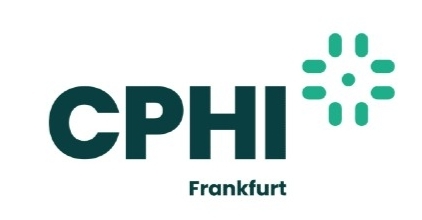- Home
- Education & Insights
- Search
- Matrix Tablets Explained: A High Level Introduction
Matrix Tablets Explained: A High Level Introduction

Matrix tablets have transformed how medicines and supplements are delivered to the patients and have become a popular choice for many manufacturers. Their ability to release ingredients gradually makes them key to improving the effectiveness and reliability of treatments.
This article will explore what matrix tablets are, their benefits, and how they compare to other forms. We'll also examine when they are most beneficial and the details of their formulation.
What Are Matrix Tablets?
A matrix tablet is a type of extended-release dosage form designed to deliver medication or nutrients to the body over a predetermined time period. They are called matrix tablets because they contain a matrix of polymer excipients that surround the active ingredient, allowing for gradual release into the gastro-intestinal track. This improves therapeutic outcomes, lower side effect and enhancing patient experience and adherence to medication schedules.
Types of Matrix Tablets
There are three main types of matrix tablets:
- Hydrophilic Matrix Tablets: These contain water-soluble polymers that swell in the presence of water, creating a gel layer that controls the drug release rate.
- Lipophilic Matrix Tablets: Made with water-insoluble polymers, these tablets release their contents by slowly eroding in the digestive tract.
- Bi-layer Matrix Tablets: These are composed of two layers with different release profiles, typically one immediate and one extended-release layer, allowing for dual drug release kinetics or fixed-dose combinations (two drugs in one tablet).
Key Components
Matrix tablets are composed of several key components:
- Active Ingredient(s): The drug or nutrient intended for delivery.
- Matrix Formers: Polymers that form the matrix structure and control the release mechanism.
- Fillers: Substances that add bulk and help in flow and compression of tablets.
Benefits of Matrix Tablets
Matrix tablets are not just a technical marvel; they offer tangible benefits that can significantly improve therapeutic regimens and patient outcomes.
Extended Release
One of the primary advantages of matrix tablets is their ability to provide extended release of medications. This controlled release mechanism ensures a steady state of medication in the bloodstream, reducing the frequency of dosing and minimizing the peaks and troughs in drug levels that can lead to side effects or decreased effectiveness.
Immediate release tablets, on the other hand, are designed to disintegrate and release their active ingredients quickly after ingestion. While this is beneficial for drugs that require rapid absorption, it can lead to spikes in drug levels in the bloodstream, which might necessitate multiple doses throughout the day to maintain therapeutic effectiveness.
Improved Patient Experience
Matrix tablets release their active ingredients slowly over an extended period, ensuring a more consistent drug level and often reducing the total number of doses needed.
By reducing the number of doses required throughout the day, for example once daily dosing, matrix tablets make it easier for patients to adhere to their medication schedules. This is particularly beneficial for chronic diseases where long-term treatment is necessary, and non-compliance can lead to serious health setbacks.
Applications: When to Choose Matrix Tablets
Matrix tablets are particularly beneficial in specific scenarios where extended drug release is required, due to reducing side effects from peaks in the blood level, reducing the frequency of administration per day to improve patient / consumer experience.
For chronic conditions such as diabetes, hypertension, and mental health disorders, maintaining consistent drug levels in the body is crucial. Matrix tablets are ideal as they minimize fluctuations in medication levels, thereby enhancing treatment efficacy and minimizing side effect.
Geriatric patients benefit significantly from extended release matrix tablets as they often struggle with strict medication regimens, and therefore, matrix tablets can provide a more manageable solution with less frequent dosing, which improves experience, adherence and overall treatment success.
Nutritional Supplements
In the nutritional sector, matrix tablets can enhance the bioavailability of vitamins and minerals, ensuring that these nutrients are released slowly and absorbed more effectively over time. This is particularly useful for supplements that are taken to support long-term health goals, such as calcium and vitamin D for bone health.
Formulating Matrix Tablets
Formulating matrix tablets involves a detailed and precise process to ensure that they meet the specific release characteristics required for the active ingredients they carry. Here are the key steps involved:
- Choose the appropriate polymer that can form the desired matrix structure.
- Ensure even distribution of the active ingredient within the matrix to ensure consistent release.
- Compress the powder blend into consistent tablets using a high speed tablet press.
- Test matrix tablets to ensure they meet the required specifications for drug release.
Closing Thoughts
Matrix tablets are the most common technology the field of extended drug delivery systems, offering numerous benefits over traditional forms like immediate-release tablets and capsules. Their ability to provide extended release makes them ideal for a wide range of applications, from treating chronic diseases to improving nutritional supplement regimes.
With ongoing innovations and the expertise of companies like Colorcon, the future of matrix tablets looks bright, promising more efficient and effective solutions for patient care and health management.



